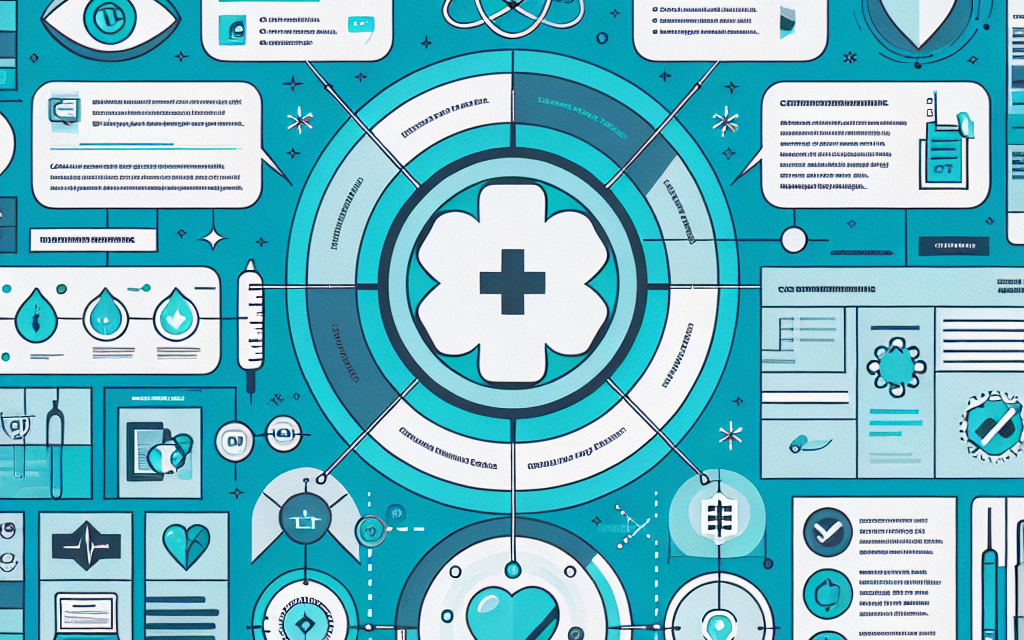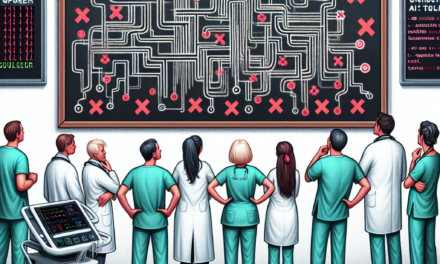Understanding CMS Meaningful Use: A Guide by Nextech
The Centers for Medicare & Medicaid Services (CMS) Meaningful Use program has been a cornerstone of healthcare reform in the United States, aimed at promoting the adoption of electronic health records (EHRs) and improving patient care. This guide by Nextech will delve into the intricacies of the Meaningful Use program, its objectives, requirements, and the impact it has had on healthcare providers and patients alike. We will explore five key subtopics: the history and evolution of Meaningful Use, the core objectives and measures, the benefits and challenges of participation, the future of Meaningful Use, and the role of technology in achieving meaningful use.
1. The History and Evolution of Meaningful Use
The Meaningful Use program was established as part of the Health Information Technology for Economic and Clinical Health (HITECH) Act of 2009. This legislation was a response to the growing need for healthcare providers to adopt EHR systems to improve the quality of care and reduce costs. The program was designed to incentivize healthcare providers to demonstrate meaningful use of certified EHR technology.
Initially, the program was divided into three stages, each with specific objectives and measures that providers needed to meet to qualify for financial incentives. The first stage focused on data capture and sharing, the second stage emphasized advanced clinical processes, and the third stage aimed at improving outcomes. Over the years, the program has evolved, with changes made to the objectives and measures based on feedback from healthcare providers and stakeholders.
In 2015, the Medicare Access and CHIP Reauthorization Act (MACRA) introduced the Quality Payment Program (QPP), which replaced the Meaningful Use program with the Promoting Interoperability (PI) program. This shift aimed to streamline the reporting process and focus more on patient outcomes rather than just the use of technology.
- HITECH Act of 2009: Laid the foundation for the Meaningful Use program.
- Three Stages of Meaningful Use: Each stage had specific objectives to improve healthcare delivery.
- Transition to Promoting Interoperability: Reflects a shift towards patient-centered care and interoperability.
As the healthcare landscape continues to evolve, the Meaningful Use program has adapted to meet the changing needs of providers and patients. The focus has shifted from merely adopting technology to using it effectively to enhance patient care and outcomes.
2. Core Objectives and Measures of Meaningful Use
The Meaningful Use program is built around a set of core objectives and measures that healthcare providers must meet to qualify for incentives. These objectives are designed to ensure that EHR technology is used in a way that improves patient care and enhances the overall healthcare system.
The core objectives are categorized into three main areas: data capture and sharing, advanced clinical processes, and improved outcomes. Each area contains specific measures that providers must report on to demonstrate meaningful use.
- Data Capture and Sharing:
- Use of EHRs for electronic prescribing.
- Providing patients with electronic access to their health information.
- Exchange of health information with other providers.
- Advanced Clinical Processes:
- Implementing clinical decision support tools.
- Utilizing patient-specific education resources.
- Engaging patients in their care through secure messaging.
- Improved Outcomes:
- Reporting on clinical quality measures (CQMs).
- Reducing hospital readmissions.
- Improving patient safety and reducing errors.
To successfully demonstrate meaningful use, providers must meet a certain percentage of these measures. For example, in Stage 1, providers were required to report on 20 measures, while in Stage 2, the number increased to 25. The measures are designed to be progressively more challenging, encouraging providers to continually improve their use of EHR technology.
Additionally, the program emphasizes the importance of interoperability, which is the ability of different EHR systems to communicate and share information seamlessly. This is crucial for providing coordinated care and ensuring that patients receive the best possible treatment.
3. Benefits and Challenges of Participation
Participating in the Meaningful Use program offers numerous benefits for healthcare providers, patients, and the healthcare system as a whole. However, there are also challenges that providers must navigate to successfully demonstrate meaningful use.
One of the primary benefits of participating in the program is the financial incentives offered by CMS. Providers who successfully demonstrate meaningful use can receive significant payments, which can help offset the costs of implementing and maintaining EHR systems. According to CMS, over $38 billion has been distributed in incentives since the program’s inception.
Additionally, meaningful use can lead to improved patient care and outcomes. By utilizing EHR technology effectively, providers can enhance care coordination, reduce errors, and engage patients in their own care. For example, a study published in the Journal of the American Medical Association found that hospitals that adopted EHRs saw a 15% reduction in medication errors.
- Financial Incentives: Significant payments for demonstrating meaningful use.
- Improved Patient Care: Enhanced care coordination and reduced errors.
- Increased Efficiency: Streamlined workflows and reduced administrative burdens.
However, there are also challenges associated with participation in the Meaningful Use program. One of the most significant challenges is the complexity of the reporting requirements. Providers must navigate a myriad of measures and ensure that they are accurately capturing and reporting data. This can be particularly challenging for smaller practices with limited resources.
Another challenge is the need for ongoing training and support for staff. As EHR technology continues to evolve, providers must ensure that their staff is adequately trained to use the systems effectively. This requires a commitment of time and resources, which can be difficult for busy practices.
4. The Future of Meaningful Use
The future of the Meaningful Use program is closely tied to the ongoing evolution of healthcare technology and policy. As the healthcare landscape continues to change, CMS is likely to adapt the program to meet new challenges and opportunities.
One of the key trends shaping the future of meaningful use is the increasing emphasis on value-based care. This approach focuses on improving patient outcomes and reducing costs, rather than simply providing more services. As a result, the objectives and measures of the Meaningful Use program may shift to align more closely with value-based care principles.
Additionally, the rise of telehealth and remote patient monitoring is likely to influence the future of meaningful use. The COVID-19 pandemic accelerated the adoption of telehealth services, and many providers have found that these services can enhance patient engagement and improve access to care. As telehealth becomes more integrated into the healthcare system, meaningful use measures may need to evolve to include these technologies.
- Value-Based Care: A shift towards improving patient outcomes and reducing costs.
- Telehealth Integration: The growing importance of remote care services.
- Interoperability Focus: Continued emphasis on seamless data exchange between systems.
Moreover, as technology continues to advance, the tools available to healthcare providers will also evolve. Artificial intelligence (AI) and machine learning are becoming increasingly prevalent in healthcare, offering new opportunities for improving patient care and outcomes. The Meaningful Use program may need to incorporate these technologies into its objectives and measures to remain relevant in the future.
5. The Role of Technology in Achieving Meaningful Use
Technology plays a crucial role in helping healthcare providers achieve meaningful use. The implementation of certified EHR systems is the foundation of the program, but it is not the only technology that can support meaningful use objectives.
For example, clinical decision support tools can help providers make more informed decisions about patient care. These tools can analyze patient data and provide recommendations based on best practices, helping to improve outcomes and reduce errors. Additionally, patient engagement tools, such as patient portals and secure messaging systems, can enhance communication between providers and patients, encouraging patients to take an active role in their care.
- Certified EHR Systems: The backbone of the Meaningful Use program.
- Clinical Decision Support Tools: Enhance decision-making and improve outcomes.
- Patient Engagement Tools: Foster communication and encourage patient involvement.
Furthermore, interoperability is a critical component of achieving meaningful use. Healthcare providers must be able to share information seamlessly with other providers and organizations to ensure coordinated care. This requires the use of standardized data formats and protocols, as well as a commitment to collaboration among stakeholders in the healthcare system.
As technology continues to advance, healthcare providers will have access to new tools and resources that can help them achieve meaningful use. However, it is essential for providers to stay informed about emerging technologies and best practices to ensure that they are leveraging these tools effectively.
Conclusion
The CMS Meaningful Use program has played a pivotal role in transforming the healthcare landscape in the United States. By promoting the adoption of electronic health records and encouraging providers to use technology effectively, the program has improved patient care and outcomes. However, participation in the program also comes with challenges that providers must navigate to successfully demonstrate meaningful use.
As the healthcare system continues to evolve, the Meaningful Use program will likely adapt to meet new challenges and opportunities. The shift towards value-based care, the rise of telehealth, and advancements in technology will all influence the future of meaningful use. By understanding the objectives and measures of the program, as well as the benefits and challenges of participation, healthcare providers can position themselves for success in this ever-changing landscape.
In summary, the Meaningful Use program is not just about adopting technology; it is about using that technology to enhance patient care and improve outcomes. As healthcare providers continue to embrace EHRs and other technologies, they must remain focused on the ultimate goal: providing high-quality, patient-centered care.





